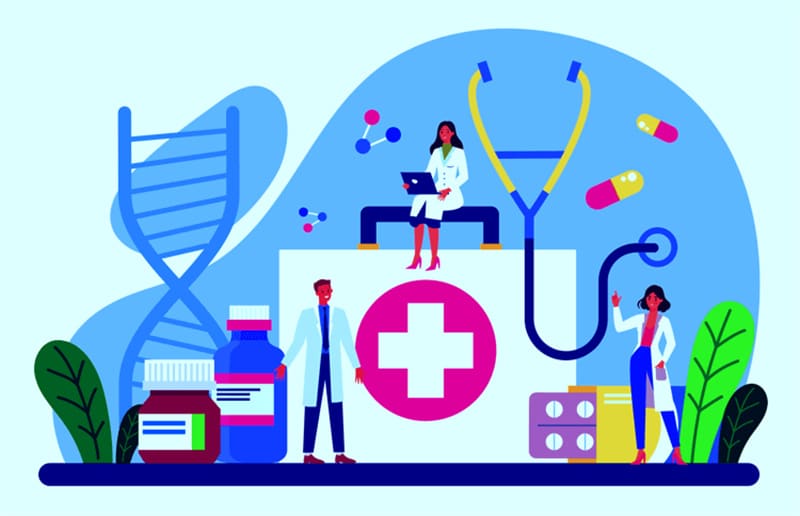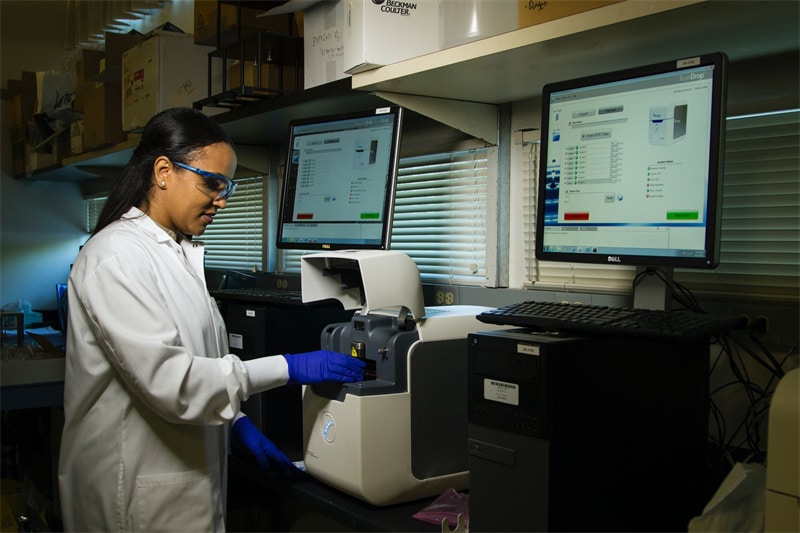
Discover innovative technical solutions for healthcare organizations to increase efficiency and streamline operations. Learn how these solutions can help organizations stay competitive.
The healthcare industry is constantly evolving, and technology plays a pivotal role in driving this transformation. With the ever-increasing demand for quality care and improved patient outcomes, healthcare organizations are seeking new technical solutions to address their challenges.
In this blog, we will explore some of the emerging technologies in healthcare and their potential benefits for organizations.
Current Challenges in Healthcare Organizations

Before we delve into the new technical solutions, let's first understand the challenges that healthcare organizations currently face. Outdated systems and processes hinder efficiency and limit the ability to deliver timely and accurate care. Additionally, the lack of interoperability between different systems results in data silos, making it difficult to collaborate and share information effectively.
Furthermore, concerns about data security and privacy have become increasingly important in today's digital landscape. Another significant challenge is the rising costs associated with implementing and maintaining Radiology Information System (RIS) solutions. The costs of RIS implementation involve investing in the necessary hardware, software, and infrastructure to effectively manage and store radiological data.
This can be a costly endeavor, especially for smaller healthcare organizations with limited budgets. Ongoing maintenance and updates to keep the RIS system up-to-date can further add to the financial burden.
Emerging Technologies in Healthcare
To address these challenges, healthcare organizations are turning to emerging technologies that have the potential to revolutionize the industry. Let's explore some of these technologies and their applications:
Artificial Intelligence (AI) in diagnosis and treatment
AI has gained significant attention in healthcare due to its ability to analyze vast amounts of data and provide valuable insights. In the field of medical imaging, AI-powered algorithms can detect anomalies and assist radiologists in diagnosing conditions accurately. This not only improves diagnostic accuracy but also reduces the time taken to interpret images.
Another application of AI in healthcare is virtual assistants. These intelligent chatbots can interact with patients, answer their queries, and provide personalized recommendations. Virtual assistants enhance patient engagement and enable healthcare organizations to deliver better patient care.
Internet of Things (IoT) in healthcare
The Internet of Things has the potential to transform healthcare delivery by connecting various devices and systems. Wearable devices equipped with sensors can monitor patients' vital signs, activity levels, and sleep patterns. This real-time data enables healthcare professionals to remotely monitor patients and intervene when necessary, thus reducing hospital readmissions and improving patient outcomes.
In addition to wearable devices, IoT can also be applied to medical equipment. Smart medical devices, such as infusion pumps and cardiac monitors, can collect and transmit data, allowing for proactive maintenance and better coordination between healthcare providers.
Blockchain technology for secure data sharing
Data security and privacy have always been paramount in healthcare. Blockchain technology offers a decentralized and secure way to store and share patient data. With blockchain, patients have control over their own data and can grant access to healthcare providers as needed.
This technology ensures the integrity and confidentiality of medical records, reducing the risk of data breaches.
Benefits of New Technical Solutions
The adoption of new technical solutions in healthcare organizations brings a multitude of benefits. Let's explore some of these advantages:
Improved accuracy and efficiency in diagnosis and treatment
With AI-powered medical imaging analysis, healthcare professionals can detect diseases at an early stage, leading to better treatment outcomes. Algorithms can analyze medical images and identify patterns that may not be visible to the human eye. This augmented intelligence improves diagnostic accuracy and increases the chances of successful intervention.
Virtual assistants contribute to improved efficiency by automating routine tasks such as appointment scheduling and prescription refills. This frees up healthcare professionals' time, allowing them to focus on providing personalized care to patients.
Enhanced patient experience and engagement
New technical solutions enable healthcare organizations to deliver a more patient-centric experience. For example, wearable devices and remote monitoring systems empower patients to actively participate in their own care. Real-time feedback and reminders ensure that patients are compliant with their treatment plans and actively engaged in managing their health.
Virtual assistants also enhance patient engagement by providing personalized health information and answering questions promptly. Patients can access information anytime, anywhere, which empowers them to make informed decisions about their health.
Streamlined workflows and reduced administrative burden
Implementing new technical solutions in healthcare organizations streamlines internal workflows and reduces administrative burdens. For example, interoperability between different systems allows for seamless sharing of data between departments, eliminating the need for manual data entry and reducing errors.
Smart medical equipment equipped with IoT capabilities enables automatic data capture, reducing the need for manual documentation. This not only saves time but also ensures accurate and up-to-date patient records.
Implementation Challenges
While the benefits of new technical solutions are significant, there are several implementation challenges that healthcare organizations must overcome. These challenges include:
Cost and budget constraints
Adopting new technologies requires a financial investment. Healthcare organizations must allocate funds for purchasing hardware, software, and training staff. Limited budgets may pose a challenge for organizations with competing priorities.
Adoption and training of staff
Introducing new technical solutions often requires a shift in mindset and changes in workflow. Healthcare professionals may require training to familiarize themselves with the new technologies and adapt to new processes. Ensuring that staff members are comfortable and proficient in using the new tools is crucial for successful implementation.
Data security and privacy concerns
With the increased use of technology comes the need for robust data security measures. Healthcare organizations must prioritize implementing strong cybersecurity protocols to protect patient information. Compliance with data protection regulations such as HIPAA is essential to maintain patient trust.
Interoperability and integration

Integration of various systems and technologies can be complex, especially when dealing with legacy systems. Healthcare organizations must ensure that new technologies seamlessly integrate with existing systems to enable data sharing and collaboration across departments.
The healthcare industry is at the cusp of a technological revolution, with new technical solutions offering immense potential for improving patient care and organizational efficiency. By embracing emerging technologies like AI, IoT, and blockchain, healthcare organizations can overcome existing challenges and deliver better outcomes for their patients.
However, it is important to address implementation challenges and invest in training and cybersecurity measures to ensure the successful adoption and utilization of these new solutions. With the right strategies and investments, healthcare organizations can harness the power of technology to transform the delivery of care and enhance patient experiences.










